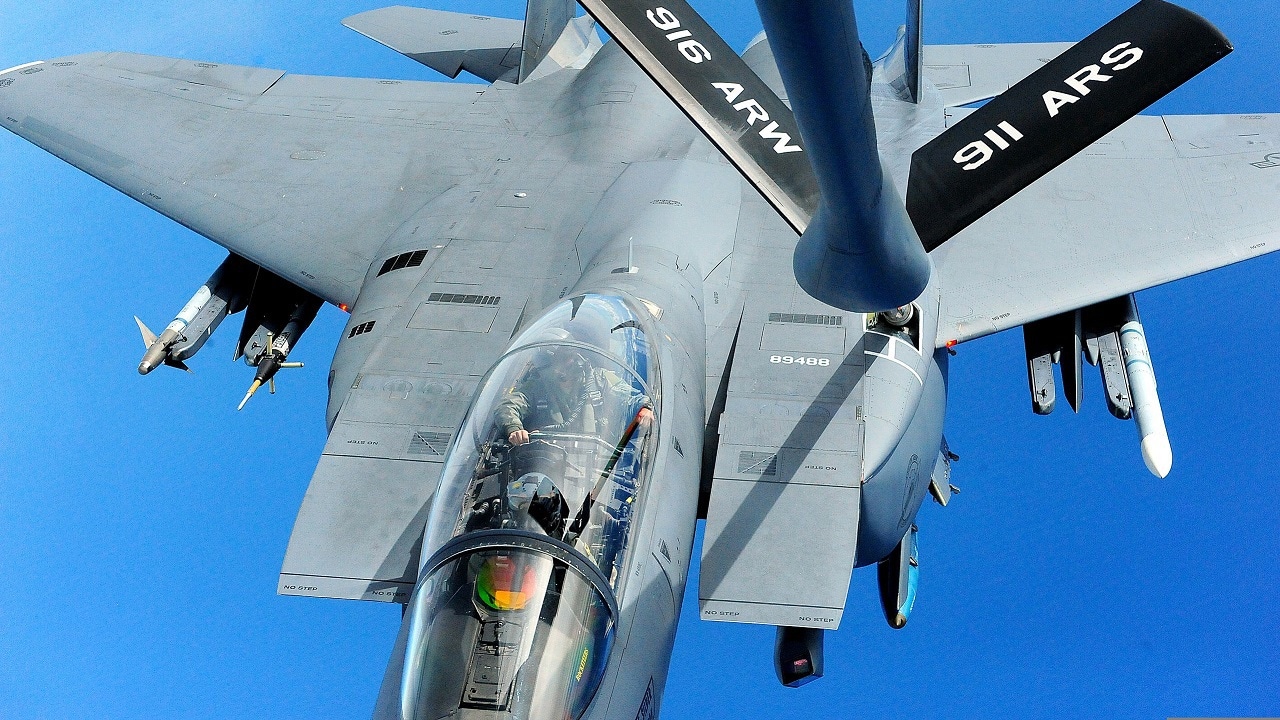The United States men’s soccer (football) team’s unprecedented run at the 2022 FIFA World Cup came to an end on Saturday. The American squad was defeated in Doha, Qatar by the Netherlands 3-1, but fans – and even past football foes – were impressed by how the relatively young squad was able to advance to the round of 16. Already some are looking ahead to the 2026 World Cup, which will be jointly hosted by the United States, Canada, and Mexico.
Yet, even as the American team and its fans are now returning home, some other Americans will be staying to ensure that the games are protected.
Spotlight on Al-Udeid Air Base
About 8,000 American military personnel are stationed at Al-Udeid Air Base, located about 20 miles (30 km) southwest of the Qatari capital city. The base has grown significantly in size in recent years, housing the Qatar Emiri Air Force, British Royal Air Force, and the United States Air Force – among other foreign forces. It is also the current host to the forward headquarters of the United States Central Command (CENTCOM), and headquarters of the United States Air Forces Central Command, No. 83 Expeditionary Air Group RAF, and the 379th Air Expeditionary Wing of the USAF.
The Qatari government has welcomed the U.S. and allied presence, and it has become the largest U.S. military base in the Middle East. Al-Udeid Air Base, which was built and paid for by the Qatari government at a cost of more than $1 billion, had remained largely a secret, even when it was used in late September 2001 as a staging ground for the U.S. invasion of Afghanistan. The base was only publicly disclosed when it was visited by Vice President Dick Cheney in March 2002.
Al-Udeid Air Base has grown significantly in the past two decades.
Earlier this year, construction workers completed work on new dorms for the thousands of airmen stationed at the base. The new living areas are hardened to protect against rocket attacks, while the facilities are likely far more comfortable than many bases in the United States. Each suite reportedly will have four bedrooms, two bathrooms, a living room, and a kitchen area. The goal of the design was to provide airmen with their own room and make it truly feel like a home.
Protecting the World Cup
The U.S. is not alone in protecting the skies over Qatar. Last year, the Middle Eastern nation received its first batch of the new generation F-15 combat aircraft, replacing the nation’s aging fleet of fighters. The F-15QA “Ababil” fighters are considered among the most capable aircraft operating in the region.
“The Qatar F-15QA program further enhanced next-generation technologies in the advanced F-15 such as the fly-by-wire flight controls, an all-glass digital cockpit and contemporary sensors, radar and electronic warfare capabilities,” said Prat Kumar, vice-president of the F-15 program at Boeing, maker of the upgraded F-15 Eagle.
“Driven by digital engineering and advanced manufacturing, these aircraft represent a transformational leap for the F-15,” added Kumar during an August 2021 rollout ceremony at the company’s St. Louis factory in Missouri. “The F-15QA will enhance the superiority of the [Qatari air force] with more speed, range and payload than any fighter in the world.”
According to Flight Global, the Qatar Emiri Air Force will receive 36 F-15QAs under a $6.2 billion contract initially awarded in 2017. The U.S. Air Forces’ F-15EX is based on technology developed for the Ababil.
It won’t be just the F-15QAs that could be seen over the skies of Doha this month.
Earlier this fall, the Royal Air Force also deployed the first Eurofighter Typhoons to the region. The aircraft are being flown by pilots of the joint RAF-Qatari 12 Squadron, which has been providing air security operations during many of the matches. Members of the unit even have a pedigree to rival any footballer, and that includes Squadron Leader Luke Wilkinson, who was among the RAF aircrews that provided protection during the Olympic Games in London in 2012.
Some 200 personnel in the unit, including pilots, along with eight RAF Typhoons began a six-month deployment, dubbed “Project Thariyat” in September to train with their Qatari counterparts. The deployment of 12 Squadron to Qatar further builds upon the strong bilateral defense relationship between Qatar and the UK, exemplified by the fact that 12 Squadron is the RAF’s first joint squadron with another nation since the Second World War.
Qatar is the first Middle Eastern country to host the FIFA World Cup, and it spent billions of dollars constructing eco-friendly and architecturally advanced sporting facilities. Due to heat concerns, this also marks the first time the World Cup is being played in the northern hemisphere in the late autumn – which also required a reduced timeframe of just 28 days, with the final match being held on December 18, Qatar’s National Day.
Regardless of who wins, it is truly an international effort to protect the event and the millions who are attending.
A Senior Editor for 19FortyFive, Peter Suciu is a Michigan-based writer. He has contributed to more than four dozen magazines, newspapers, and websites with over 3,000 published pieces over a twenty-year career in journalism. He regularly writes about military hardware, firearms history, cybersecurity, and international affairs. Peter is also a Contributing Writer for Forbes and Clearance Jobs. You can follow him on Twitter: @PeterSuciu.

